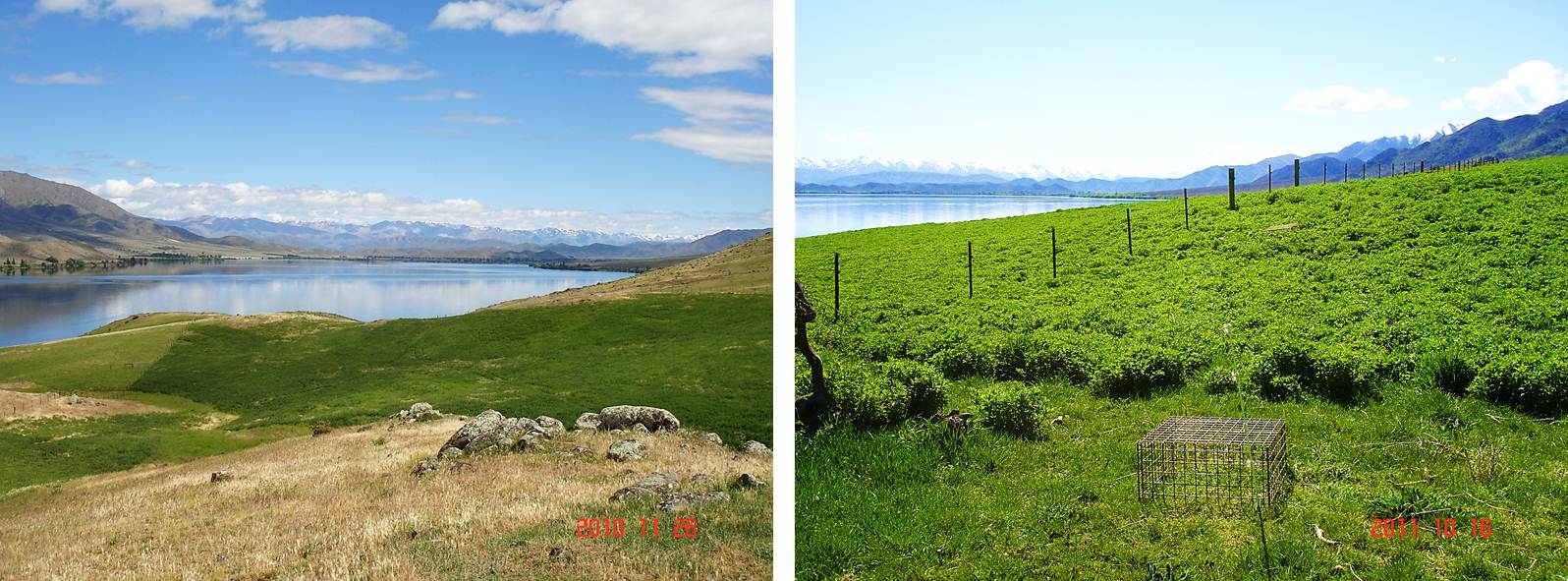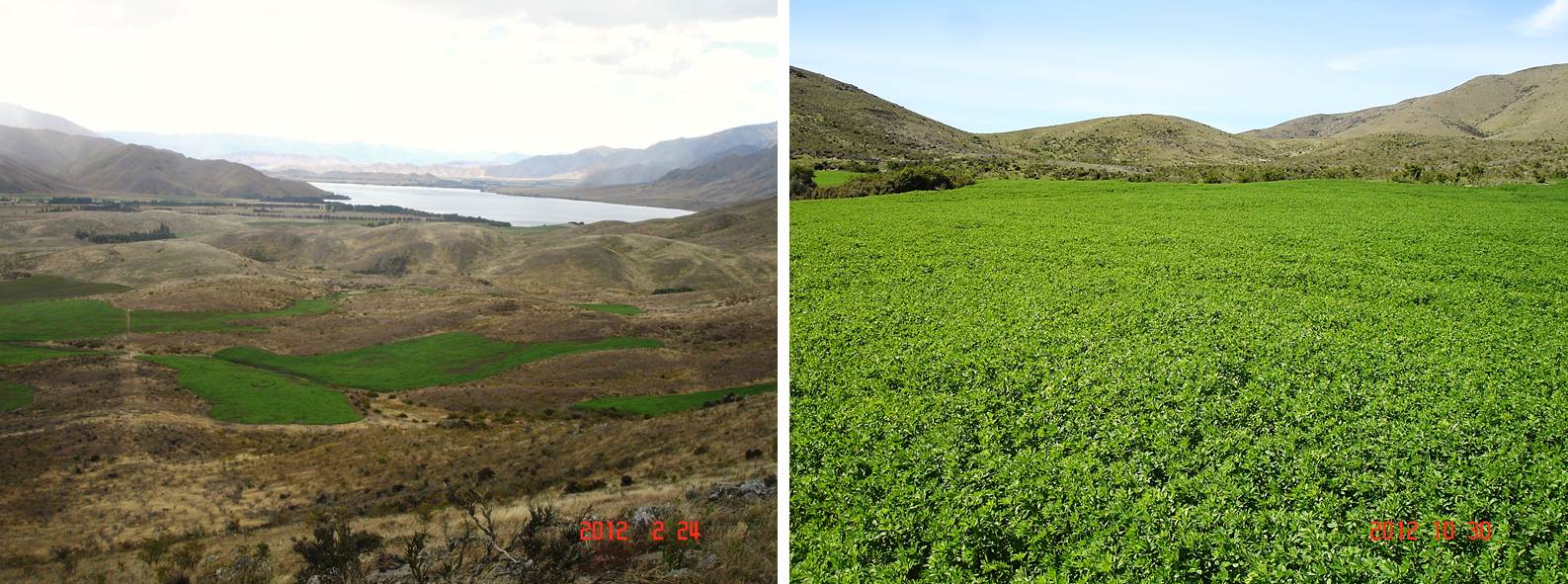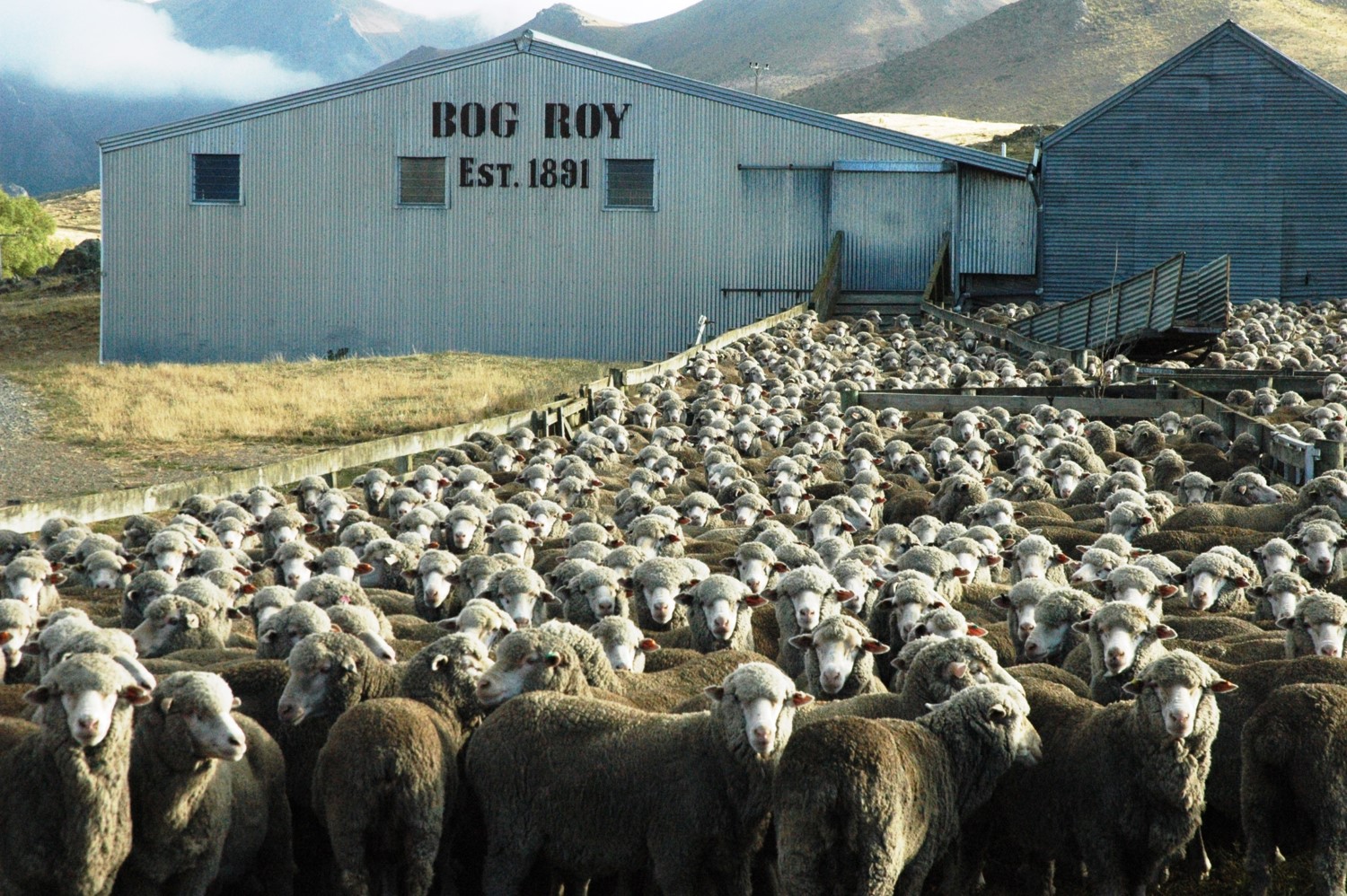1. Rough Gully:
This is about a 30 ha block, originally sown in 2007, which was subsequently subdivided into 3 paddocks, each approximately 9 ha at the end of 2010. The pasture mix comprises lucerne and cocksfoot. We started cage cuts on this area last season, and although Dryland, it outperformed all other measured areas on the property (including irrigated), with last season growing approximately 12 t DM/ha. It is northwest facing, but has great deep soils. It is because of this production we have decided to add it to the blog, to see if this production continues, and because of the fact it is a lucerne/cocksfoot mix – something that many people question.

Following on from the success of the Shearing Paddock, we were confident to start developing a new, historically low producing, briar infested block. Taff’s has been through a spray programme, where again, the better (deeper) soils were identified and sprayed, then mulched, and is now in its first season of Ryecorn. It will go through another rotation of Ryecorn before going into lucerne. Ryecorn grows well here at Bog Roy, and we have tried many other forms of break crops, including rape, kale, oats and ‘Pasja’. However, nothing outperforms, or is as reliable in our climate as the trusty ryecorn. It handles being sown into turfy, unimproved soils, is a great winter break crop and does a great job at getting the area ready for lucerne. That will be the focus of this paddock.
2. Shearing Paddock:
This is a pure stand of ‘Seed Force 4’ lucerne, in what was our first attempt at what Derrick refers to as “Landscape Farming”. This is where we sow the deeper valley areas but leave the dry shallow ridges as native. This paddock was initially sown in 2010, based on ‘gut’ instinct rather than figures, mainly to feel like we were doing something positive amongst all the negative ‘extras’ (e.g. tenure review, water hearings, farm succession). The deeper soils were identified with Gundy tying pieces of pink hazard tape to briar bushes for the helicopter pilot to see where to spray. It was later mulched and went through two crops of Ryecorn. It is now in its second season of lucerne and is performing really well. The success (along with subsequent figures backing up with an internal rate of return on investment of 26%) has given us confidence to continue this type of development, and enabled us to see the entire property through new sets of eyes.

3. Taff’s Corner:
Following on from the success of the Shearing Paddock, we were confident to start developing a new, historically low producing, briar infested block. Taff’s has been through a spray programme, where again, the better (deeper) soils were identified and sprayed, then mulched, and is now in its first season of Ryecorn. It will go through another rotation of Ryecorn before going into lucerne. Ryecorn grows well here at Bog Roy, and we have tried many other forms of break crops, including rape, kale, oats and ‘Pasja’. However, nothing outperforms, or is as reliable in our climate as the trusty ryecorn. It handles being sown into turfy, unimproved soils, is a great winter break crop and does a great job at getting the area ready for lucerne. That will be the focus of this paddock.

